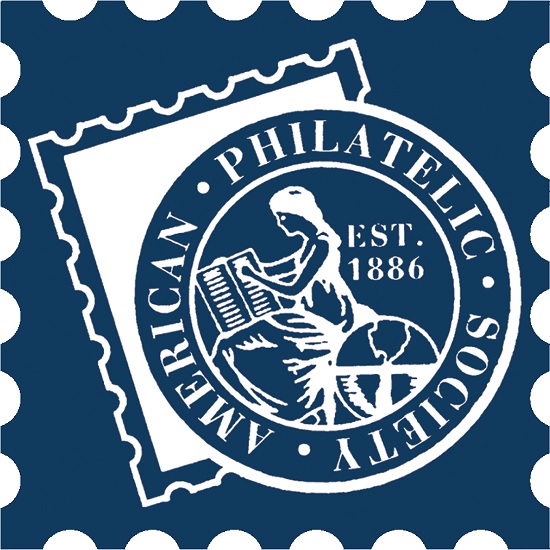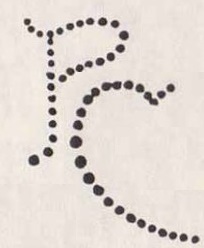Riverside Stamps

Return to Home Page or Altered and Faked stamps Index Page
|
The contents of
this website is copyright protected. Any suggestions for additions or changes are always welcome. |
Suspect Scott #496a (Small Hole Variety), Unused Joint Line Pair (4/20/19).
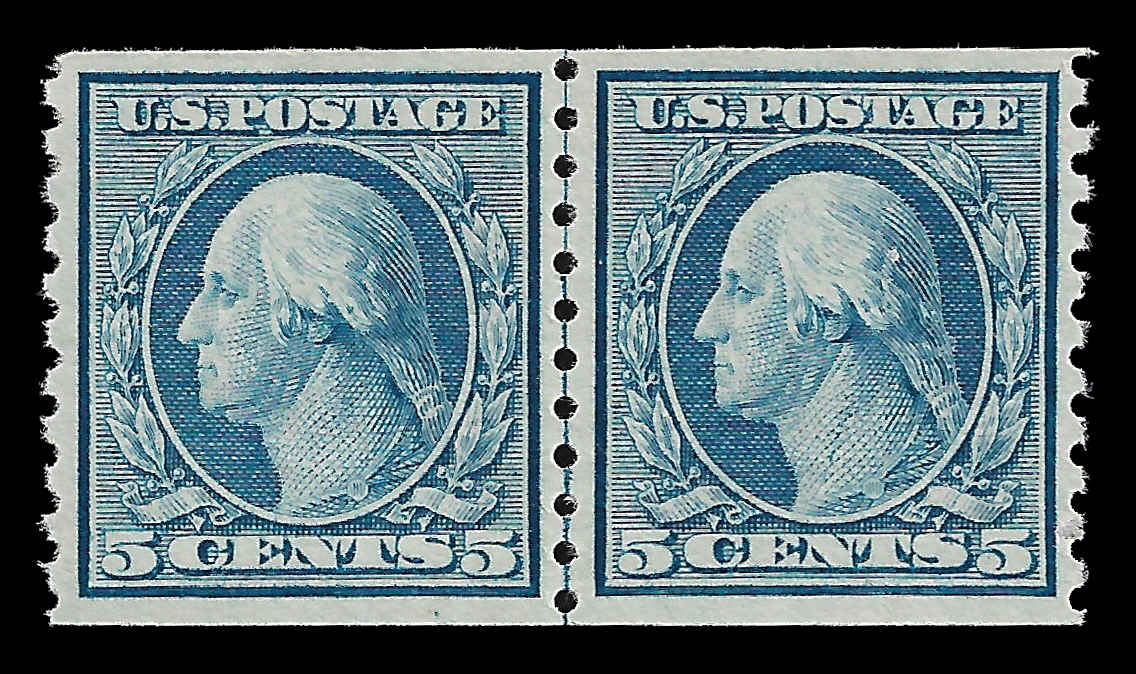
This is a patient that was sent in to the American Philatelic Expertizing Service (APEX, Certificate #229279) that has proved to be a real teaching moment when it comes to expertizing the more uncommon Washington/Franklin varieties. The lesson that I learned form this exercise is that you can never assume anything to be true unless you know for a fact that it is true.
The Scott #496a, Unwatermarked, Perf 10 Vertically, Rotary Press Horizontal Coil with Small Hole Variety. This issue is not faked. Catalog value is $------ (2017 Specialized does not show a value for #496a in any condition, Siegel Auctions shows three joint line pairs sold in 2018 Ė none selling for more than $650.00). Philatelic Foundation shows seven certified examples. Since there is no imperforate rotary press unwatermarked 5c sheet stock that conterfeit perforations can be added to to create a #496a it can be assumed (correctly) that the perforations are genuine. Can be confused with #458 (perf 10 Vertical, SLWM)
It just so happens that I have a used #496 pair in my collection that I had most likely picked up in an auction box lot many years ago. I figured that since the #496a Small Hole Variety is not common my #496 could not possibly be the small hole variety and assumed that the perforations were of the normal "large" size.
The suspect is rotary press printed as there are pressure ridges visible in the middle perfs that face to the left.
The suspect shows no sign of being watermarked so it canít be a #458 (perf 10 Vertical, SLWM)
Natural Light
Enhanced
The image below shows my used #496 (at left) next to the suspect (at right).
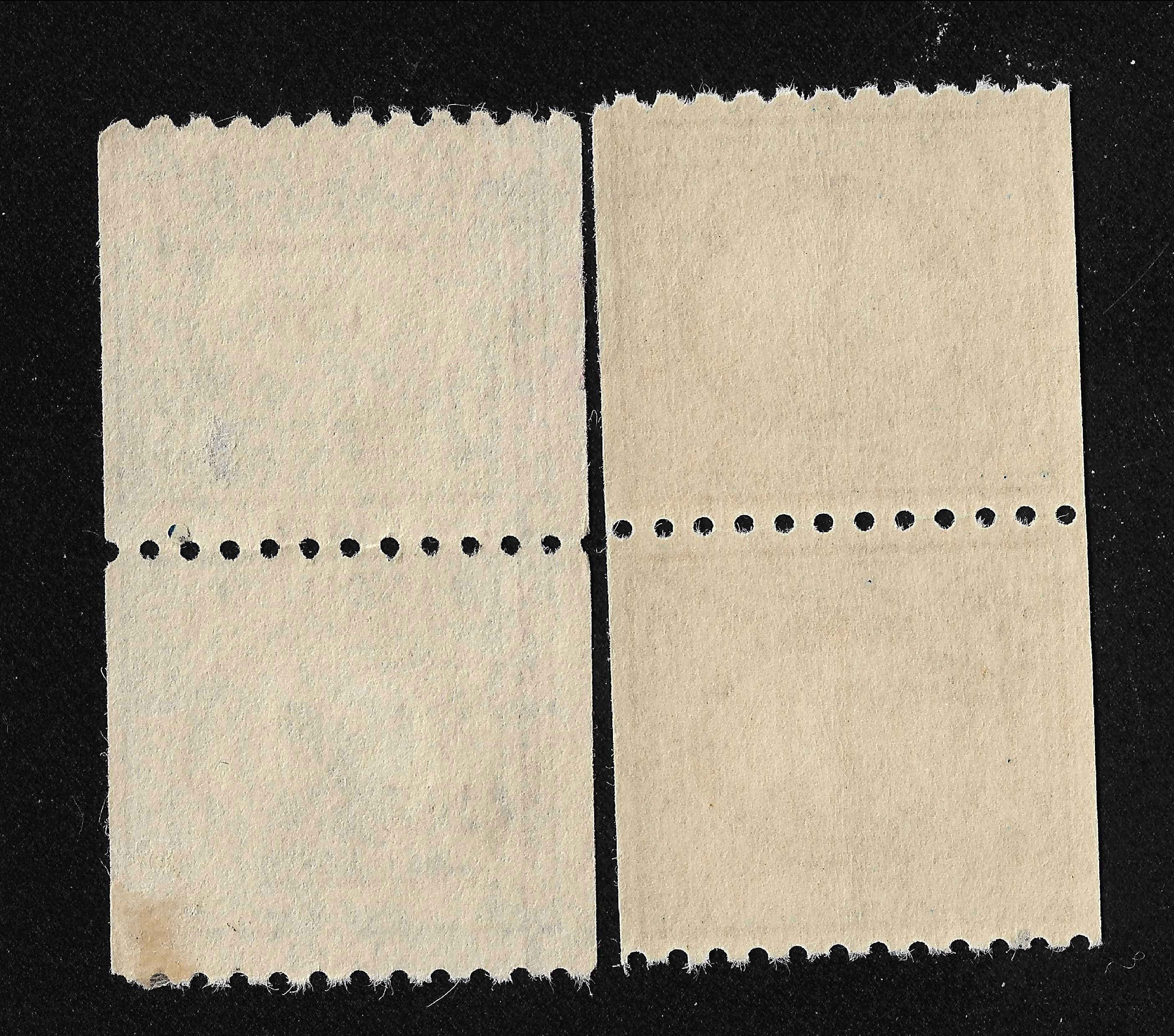
As can be seen the suspectís perfs and the spacing between the holes appear to be the same as my used #496.
The images below show close up images of the suspectís perforations and my used #496 perforations with the third image showing my #496 perforation overlaid on the suspectís perforations.
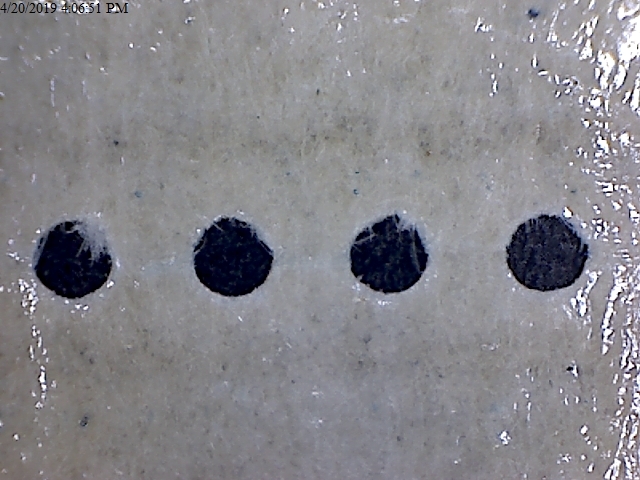
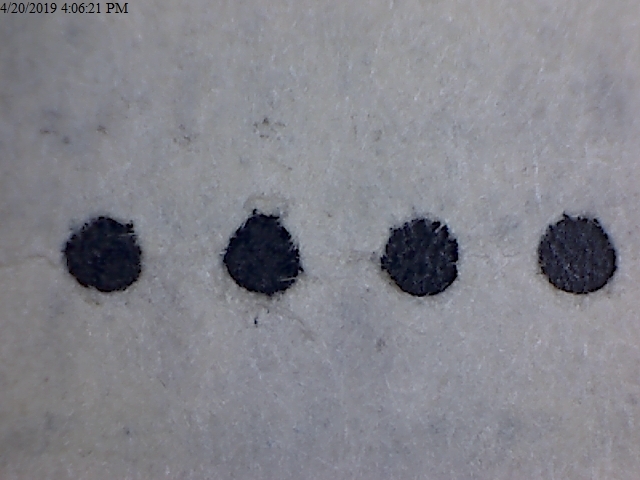
Used #496 perf holes over suspect #496a perf holes, used #496
holes at 50% transparency.
As can be seen the suspectís perfs holes are exactly the same size as the used #496ís perf holes. If the suspect had smaller perf holes then the larger holes of the used #496 would have left a light colored halo around the dark perf holes of the suspect.
Put a call in to APEX to see if they have a certified #496a on hand with which they can provide me a high resolution scan or any information as to the exact measurements of the small perf holes vs. the normal perf holes.
Unfortunately the APEX reference collection does not contain a certified #496a and I was told by Tom Horn (Director of Expertizing) that the spacing between the perf holes is important in determining if the suspect is a small hole variety or not as the small holes would have wider spaces between the perf holes that the normal sized holes. I measured the paper space between each hole of the suspectís middle perfs and my used #496 with the results being:
|
Used #496 (mm) |
Suspect #496a (mm) |
|
|
1.042 |
1.042 |
|
|
1.062 |
1.062 |
|
|
1.083 |
1.062 |
|
|
1.083 |
1.042 |
|
|
1.062 |
1.062 |
|
|
1.042 |
1.042 |
|
|
1.042 |
1.021 |
|
|
1.062 |
1.042 |
|
|
1.062 |
1.062 |
|
|
1.062 |
1.062 |
|
|
1.062 |
1.083 |
|
|
1.042 |
|
|
|
Average |
1.059 |
1.053 |
As can be seen the average spacing between the perf holes in my used #496 are very nearly the same as the suspectís spacing.
The joint line is genuine showing a raised line in foil.
Conclusion: In my opinion the suspect is a Scott #496 unused joint line pair, MNH, genuine in all respects.
At this point I sent the patient back to APEX and waited for the opinion to be added to the online certificate database. In the middle of June the opinion was added to the online certificate database and much to my surprise I found out that I had been wrong. The opinion reads "Scott No. 496a, pair, small holes, unused, full original gum, never hinged, genuine in all respects.". On the one hand I was disappointed that I had got the analysis wrong but on the other hand I was happy that the submitter actually had a rare variety to put In their collection. I was also happy because if the holes on my used #496 match the holes on the suspect then I must also have a small hole variety used pair.
I then sent a copy of my report on the suspect to colleague at APEX to get his opinion and he wrote back with "Large holes versus small holes: I use my Peak 10X with inscribed millimeter scale to measure the hole size and the spacing between the holes. For large holes, both are approximately 1.00 mm; for small holes, the holes are about 0.95 mm and the spacing between is about 1.05 mm. Your measurements indicate a small hole variety, and thatís what it looks like to me from the images."
I attended the American Philatelist Society's Summer Seminar held during the last week of June, 2019 and bought a couple of pairs of unused #496. While at Summer Seminar one of my classmates reminded me that the U.S. Specialty Multi Gauge has a Large/Small hole gauge. At that point I whacked myself on the forehead and said "of course there is" and quietly said to myself that I should have known that gauge was there in the first place.
I scanned the U.S. Specialty Multi Gauge Large/Small hole gauge at 1200dpi and overlaid it on the #229279 perf holes, my used pair holes and the unused pair that I bought at Summer Seminar.
|
These images show the U.S. Specialty Multi Gauge Large/Small hole gauge overlaid
on the#229279 perf holes. Large Hole Small Hole As can be seen the #229279 perfs are smaller than the large hole gauge evidenced by the white halos around the holes while they are the exact same size as the small hole gauge. |
These images show the U.S. Specialty Multi Gauge Large/Small hole gauge overlaid
on the used pair perf holes. Large Hole Small Hole As can be seen the used pair perfs are smaller than the large hole gauge evidenced by the white halos around the holes while they are the exact same size as the small hole gauge. |
These images show the U.S. Specialty Multi Gauge Large/Small hole gauge overlaid
on the unused Summer Seminar pair perf holes. Large Hole Small Hole As can be seen the unused Summer Seminar pair perfs are the exact same size as the large hole gauge while they are the larger than the small hole gauge evidenced by the black halos around the holes. |
So, what are the lessons to be learned from this exersise? I think the big thing to take away from all this is that one can never assume that whatever you are using as a reference is correct without first verifying that it is correct. The other thing is that good finds can still be found in the most unlikely places. The used pair that I had used as my reference was most likely from a nondescript box lot that I bought in a local auction. The used pair had probably been in someone's collection for who knows how long without them even knowing that they had the small hole variety. I turned in my used #496 to APEX to be certified as a #496a small hole variety, I should hear back in 60 to 90 days at which time I can add it to my collection next to my new unused #496 large hole pair.
Reference material used:
- The Expert's Book. A practical guide to the authentication of United States stamps. By Paul W. Schmid.
As always comments and suggestions are always welcome.
To Contact Riverside Stamps:
Email:
Mike Girard - Owner / Operator / Web Master:
g1rardmn1099@comcast.net
|
I am a member of the American Philatelic Society
|
I am a member of the United States Stamp Society 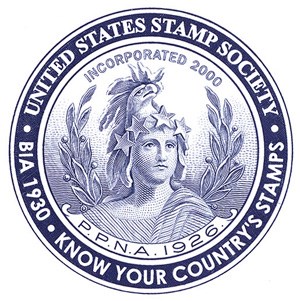 USSS #: 16733 Visit the United States Stamp Society Website at www.usstamps.org |
I am a member of the Perfins Club
|
